 California Waterfowl is accredited by an independent program of the Land Trust Alliance. The accreditation seal is a mark of distinction in land conservation. It is awarded to land trusts meeting the highest national standards for excellence and conservation permanence.
California Waterfowl is accredited by an independent program of the Land Trust Alliance. The accreditation seal is a mark of distinction in land conservation. It is awarded to land trusts meeting the highest national standards for excellence and conservation permanence.
CWA's waterfowl and wetland programs strive for abundant habitat and thriving waterfowl populations in the state, both local and wintering.
We leverage member contributions to obtain major public and private grants that enable us to do thousands of acres of habitat work every year. We leverage the passion of our members to run programs that make a real difference to California's breeding populations of wood ducks and mallards.
And our dedicated staff works up and down the state to band California's iconic pintail and mallards. This contributes to research that supports our science-based system of hunting seasons lengths and bag limits — the very thing that ensures hunting remains sustainable and never threatens the health of waterfowl populations.
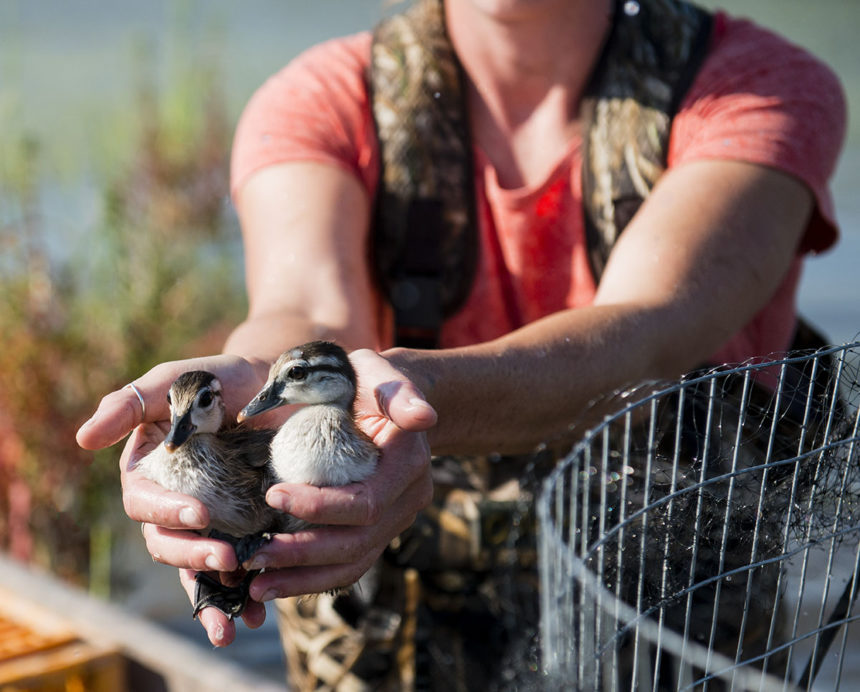
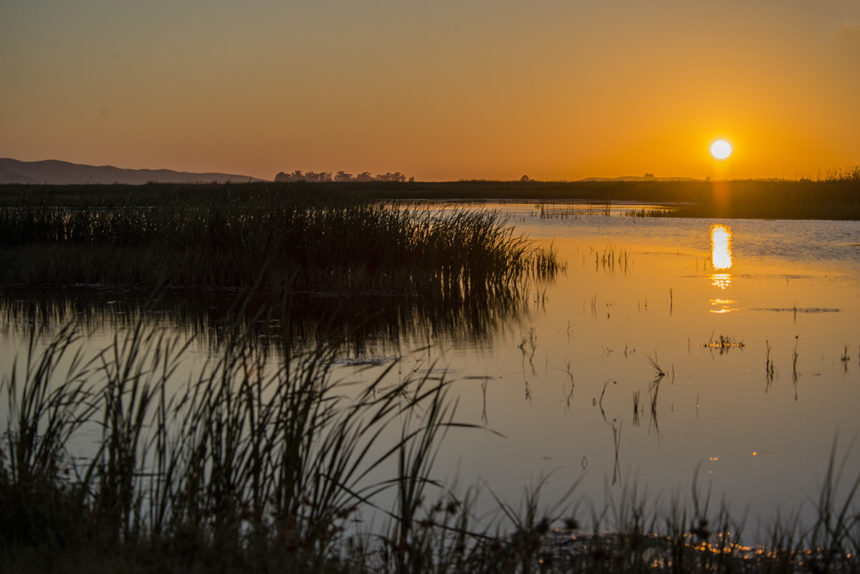
WETLAND RESTORATION
CWA spends millions of dollars on wetland improvements projects on thousands of acres in California every year. Our projects reach across the state, from the Klamath Basin in the northeast to the Imperial Valley near the Mexican border.
Our project managers work hard and work smart to improve the capacity of California's remaining wetlands. Meanwhile, our advocacy team advocates for adequate water supplies and habitat-friendly legislation.
WOOD DUCK PROGRAM
One hundred years ago, wood ducks were on the brink of extinction. They rebounded, but the riparian habitat they require for breeding didn't, so they needed help.
CWA began coordinating a state-wide citizen science project, deploying wood duck nest boxes across the landscape and volunteers who monitored how ducks used them. More than 950,000 wood duck ducklings have leapt from CWA nest boxes.
The program also includes education opportunities, with fields trips where children are offered an array of hands-on, engaging activities geared towards wood ducks.

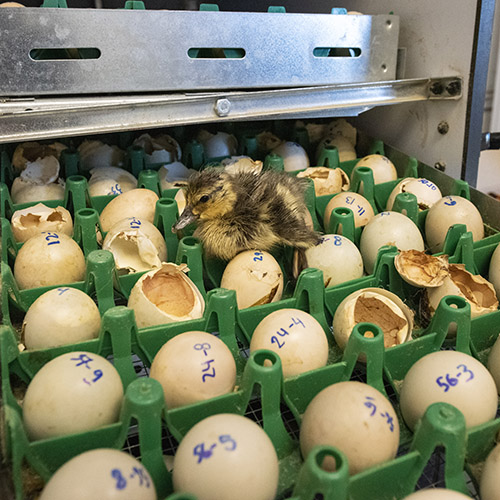
MALLARD EGG SALVAGE
Wild mallard nesting habitat - dry fields with good grass cover near water - is in short supply, so ducks in California often nest in farm fields. Sometimes it goes well; other times broods don't hatch before farmers need to harvest, mow or disc.
The Egg Salvage Program deploys volunteers to collect eggs, which are then incubated. Ducklings are raised to five weeks, then released into the wild. Some get banded by youth during educational events.
The program bands and releases thousands of ducks every year, creating from nothing a sizable addition to the wild duck population.
DELAYED WHEAT HARVEST INCENTIVE PROGRAM
Begun in 2020, this program provides incentives to farmers who delay wheat harvest until July 15 to give mallard nests in their fields time to hatch naturally. The benefits of this program are that 1) the ducklings are raised by their mothers, which is ideal, and 2) it is not labor-intensive because the whole focus is on letting nature take its course.
Incentive payments of $50 per acre will help offset risks posed by the delay, including crop degradation and fire risk.
The program has proved to be extremely popular with farmers, and we are seeking grant funding to make it sustainable going forward. In the meantime, it has been supported by CWA's generous donors.
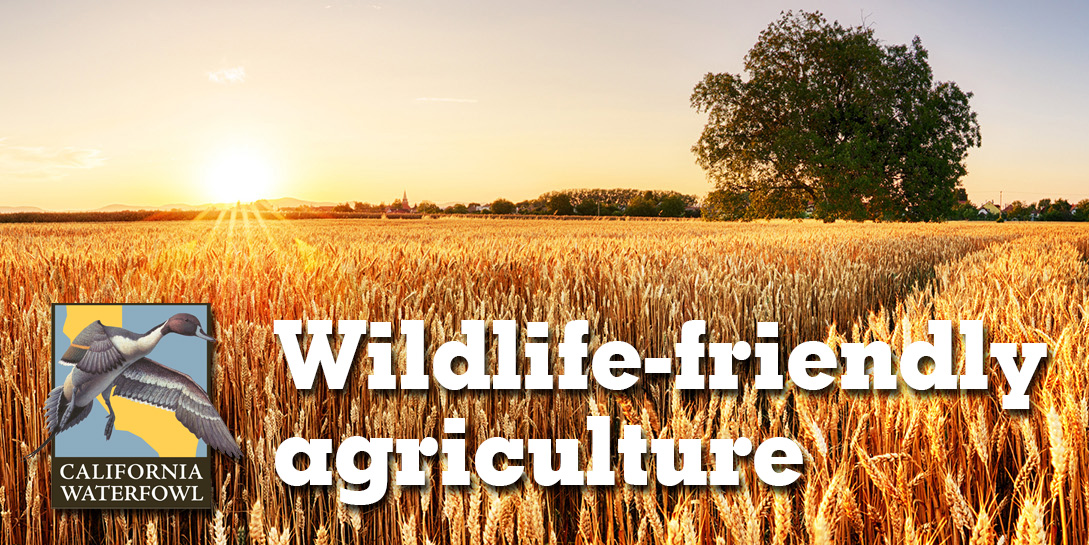
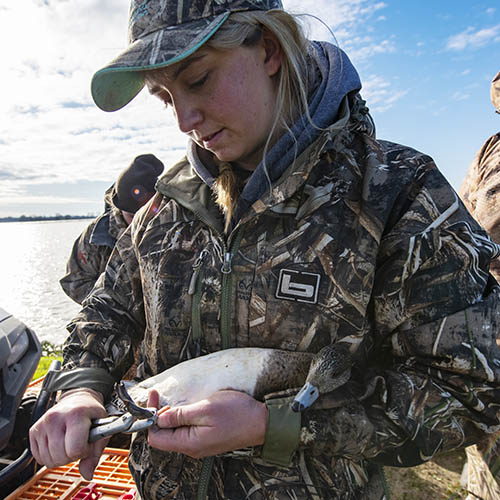
BANDING
California Waterfowl, with partial funding from the California Department of Fish and Wildlife, bands thousands of ducks every year to provide California-specific data used to assess waterfowl populations.
We focus primarily on mallards and pintail, the latter being the most numerous duck in our state each winter.
Our banding efforts help biologists understand waterfowl populations, movements and health, while providing a tool for wildlife agencies to set science-based bag limits and season lengths.
ADVOCACY
Boots on the ground will never be enough to support waterfowl and wetlands if California doesn't have a legal and regulatory environment that's friendly to waterfowl and wetlands.
So our advocacy team works year-round with local, state and federal governments, as well as regulatory agencies, to promote policy that helps wetland managers and farmers do what's best for wildlife.

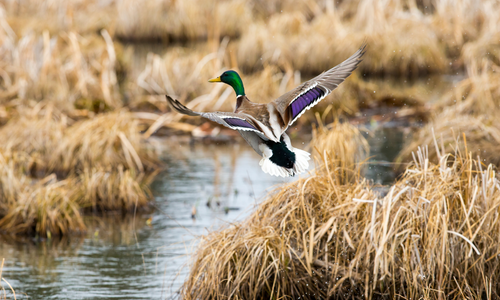
NESTING BIRD HABITAT INCENTIVE
The Nesting Bird Habitat Incentive Program (NBHIP) was established in 2018 by the passing of Assembly Bill (AB) 2697 and is designed to address declines in local breeding waterfowl and ring-necked pheasant populations. The program wasn’t funded until the passing of AB 614 in October 2021, which created an additional surcharge of $10 for the upland game bird hunting validation and state duck hunting validation
RICE LEVEE PROGRAM
California Waterfowl’s Rice Levee Program pays rice farmers to provide waterfowl nesting habitat on the levees in their planted rice fields during the spring and summer. Levees that are constructed in the spring immediately before planting provide little to no nesting cover for our local pheasants and waterfowl. Previous studies have shown that fields with fall constructed levees provide better nesting cover and produce significantly more birds.



